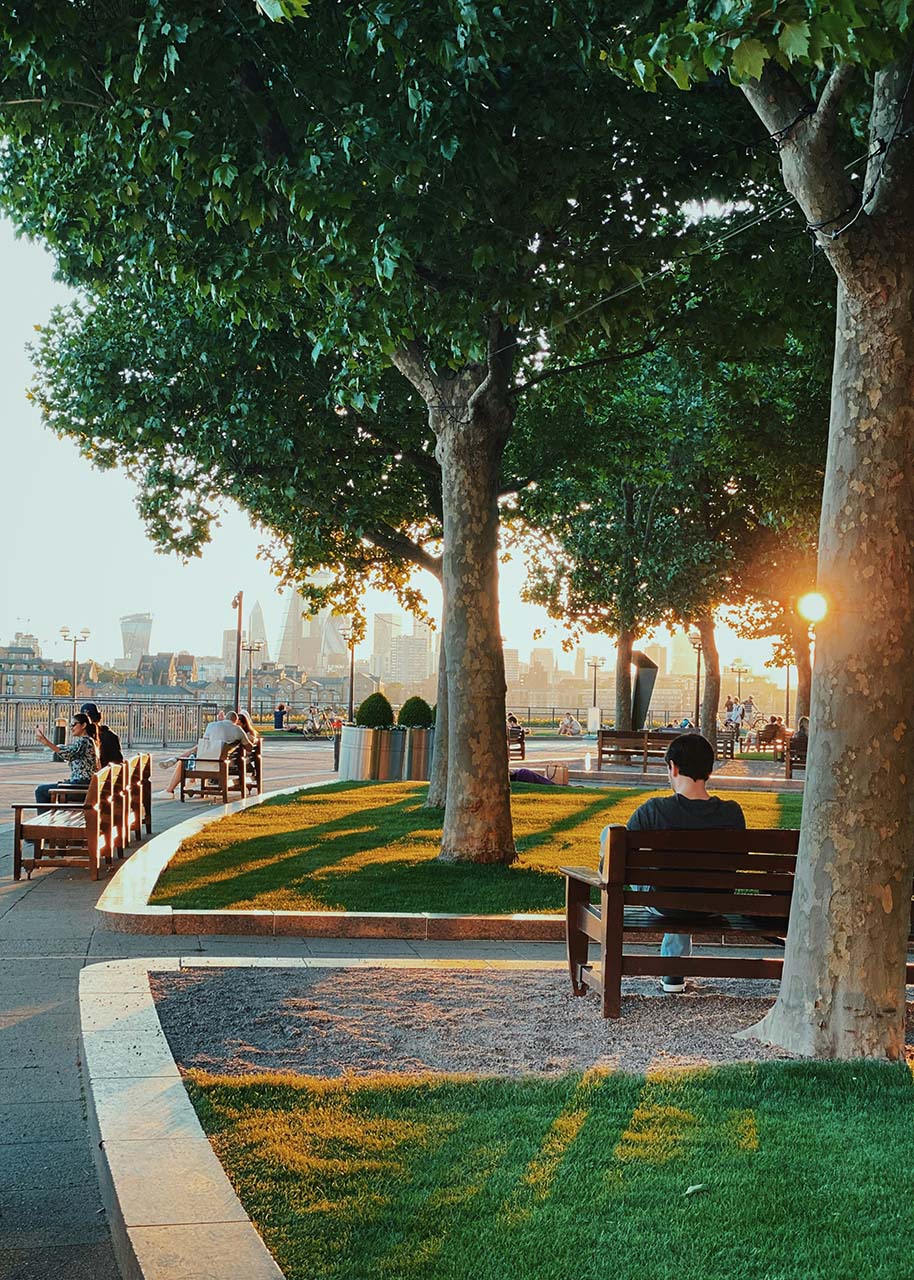(collective post)
In one of the world’s busiest cities lies a beautiful contradiction. Spaces of profound calm and tranquillity are surrounded by a constant hum of urban life. London’s hidden gardens and lesser-known parks are a sanctuary from the relentless pace of city living. They provide pockets of peace and quiet where time seems to slow down and we can finally refocus.
With Love Parks Week, a celebration of the role of green spaces within our communities, having only recently taken place, there’s no better time to explore what these havens offer in terms of respite from the concrete and crowds.
The art of discovery
You don’t need to be a London local to find the city’s most enchanting spaces. In fact, a combination of research and spontaneity can reveal some of the most spectacular spots. Local guidebooks and community websites often reveal gems overlooked by mainstream tourism. The likes of Citymapper or the Ordnance Survey app and specialist garden guides can point you toward unexpected discoveries. With the capital making a concerted effort in recent years to green the concrete jungle, there’s always something new to discover.
The London Gardens Society and borough council websites frequently highlight seasonal events and lesser-known locations worth exploring. However, many of the most magical encounters you’ll enjoy will happen through simple wandering. Whether it’s taking an unfamiliar route home from work or following a promising path that veers away from the main road. Simply allow your curiosity to guide your steps.
London is renowned for its architectural landmarks, but it’s home to countless striking green spaces too. For instance, the haunting beauty of St Dunstan in the East Church Garden. Its medieval ruins create a Gothic framework for climbing vines and peaceful benches. Here, the remnants of a 12th-century church, destroyed in the Blitz, have been transformed into a contemplative space where history and nature intertwine.
The Kyoto Garden in Holland Park is another example, with its carefully curated Japanese design. It features a waterfall, koi pond, and meticulously maintained plantings that change dramatically with each season. Meanwhile, the Inner Temple Garden in the City of London provides the classic English garden experience. With perfectly manicured lawns and flowerbeds that have been tended for centuries, giving visitors a glimpse into London’s legal and horticultural history.
Why gardens matter for slow living
Gardens are often overlooked as a feature of positive wellbeing and slow living. But they hold so much power in terms of calming the mind and allowing us a moment to destress. For those who live in the city, it’s especially important to take those moments to reflect and unwind, because city life can be sensory overload all the time. The gentle rustle of leaves replaces the constant drone of traffic. The varied textures of bark, stone, and petals invite tactile exploration. These sensory experiences ground us in the present moment, naturally encouraging us to take a slower pace and deliver a deeper awareness of our surroundings.
Gardens also provide the perfect opportunity to disconnect from phones and laptops which constantly demand our attention. The simple act of leaving your phone in your bag and reading a book instead, or just taking time for a mindful walk through the park can work wonders for helping your mind settle into a more natural rhythm.

The mental health benefits of spending time in nature are well-documented. Studies consistently show that spending even small periods in green spaces can lower our stress hormones, reduce blood pressure, and improve our mood. The physical benefits are just as valuable. Regular garden visits encourage gentle movement, breathing in cleaner air, and a chance to boost your vitamin D levels. This all contributes to your overall wellbeing.
It’s in keeping with the Japanese practice of ‘forest bathing‘ or shinrin-yoku. This practice involves mindfully immersing yourself in nature to boost immune function and reduce anxiety. London might not offer dense forests to lose yourself in. However, its parks and gardens offer just as much opportunity to enjoy the same therapeutic experiences.
Making the most of your visit
To really embrace the restorative potential of London’s gardens, approach your visit with intentionality. Whether you’re travelling alone or with a friend who shares your desire for quiet reflection. Follow your natural curiosity without the pressure of entertaining others.
We’re always tempted to document our every move on social media but resist the urge. Capturing a few meaningful photos can be great for preserving memories. But constantly viewing the world through your phone takes you out of the moment. It means you lose the chance to really engage with your surroundings. Instead, why not bring a notebook or sketchbook to jot down your thoughts and what you saw on your walk rather than relying on your phone? You’ll still get to retain the memories, but you’ll enjoy a more contemplative experience.
Finally, time your visit right. When you head outside can really change the overall experience. Early morning visits are often more peaceful and have the added benefit of the beautiful morning light. Late afternoon gives you golden hour light, but the parks are likely to be busier at this end of the day.
London may be known as a concrete jungle, but its hidden gardens and parks offer the perfect opportunity to reconnect with nature and ourselves. These spaces remind us that even in the busiest cities, spaces for reflection and restoration do exist for those willing to seek them out.
This post was published in collaboration with a content partner. The article is meant to inspire you how to live a slow, simple, soulful and sustainable lifestyle and may contain (affiliate) links to articles, websites or products/services that may be of interest to you.
Would you like to receive inspiration from The Slow Living Guide regularly?
Sign up for the newsletter here.



